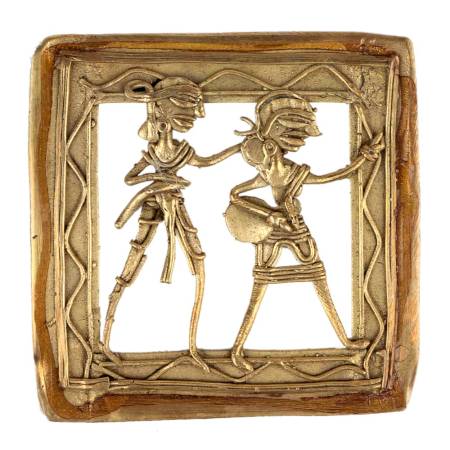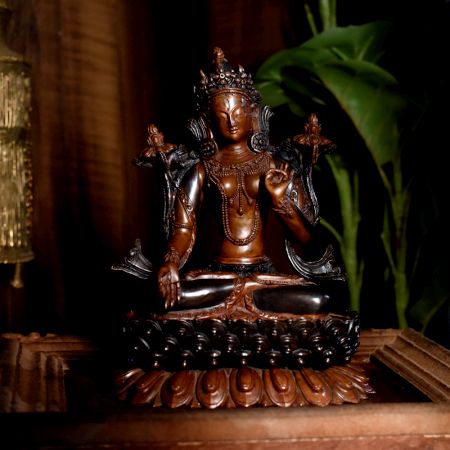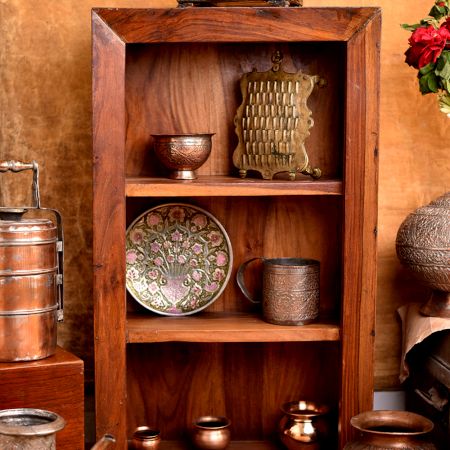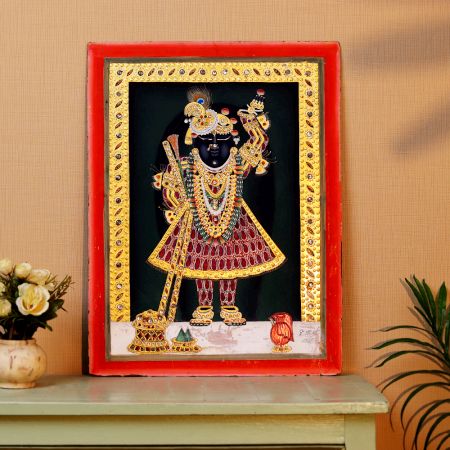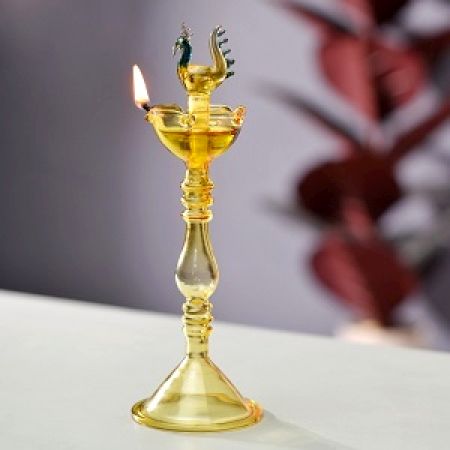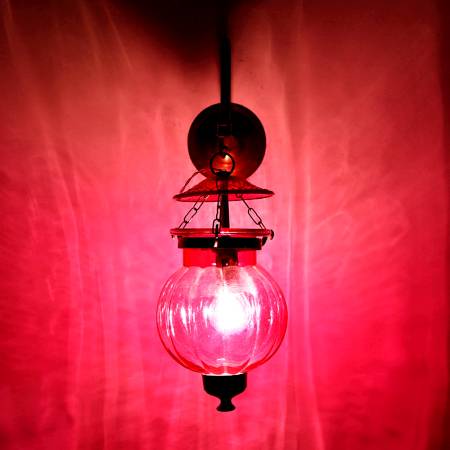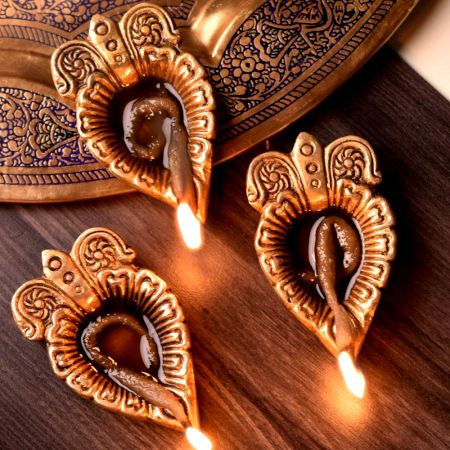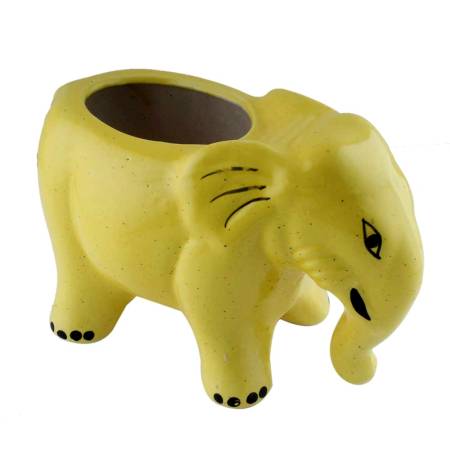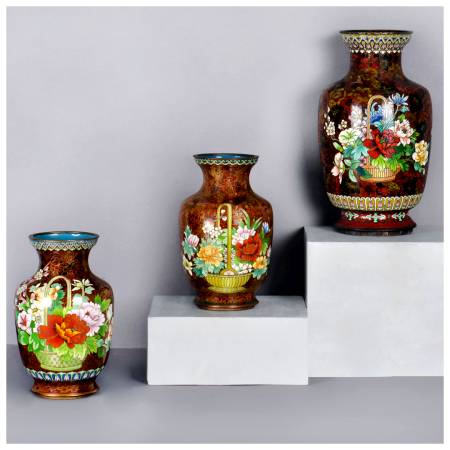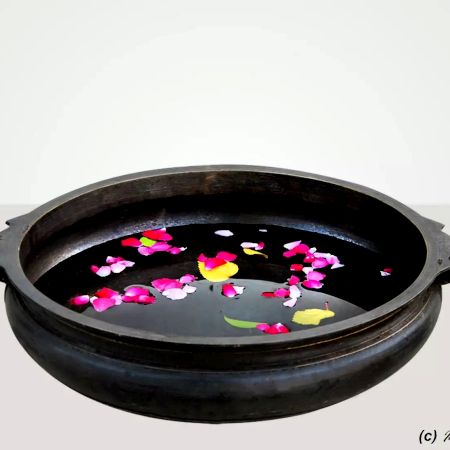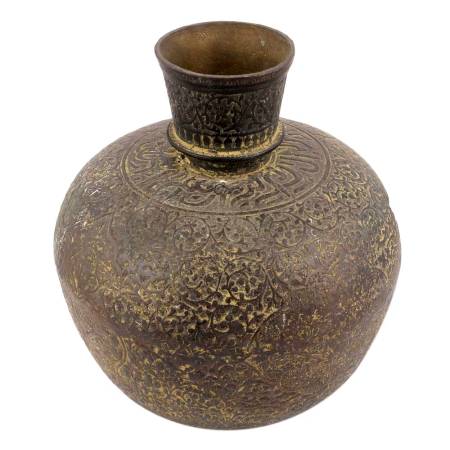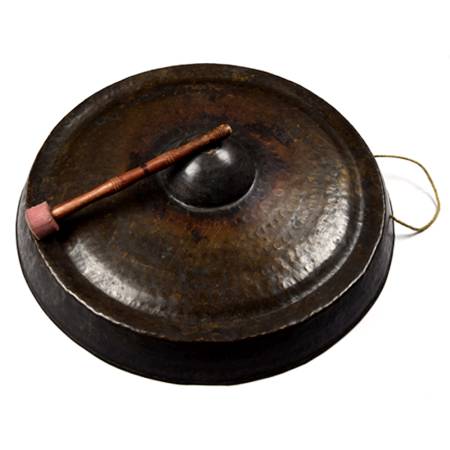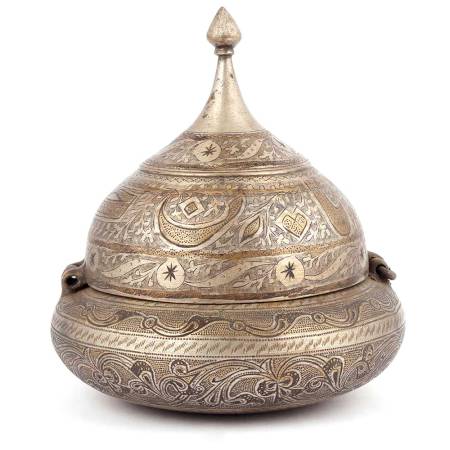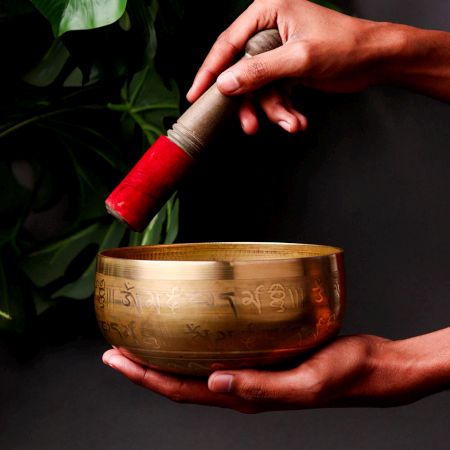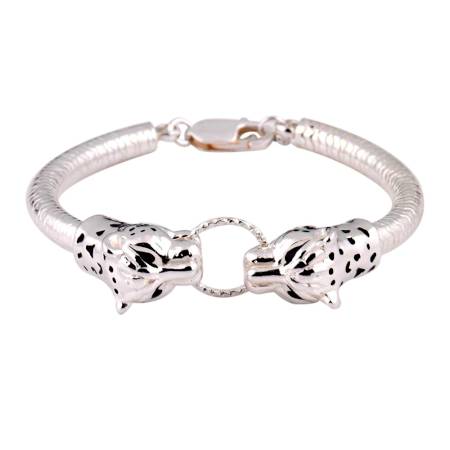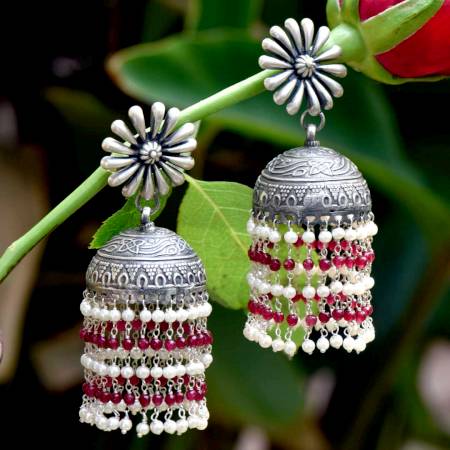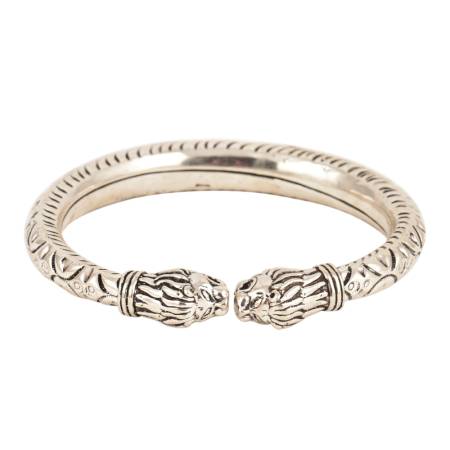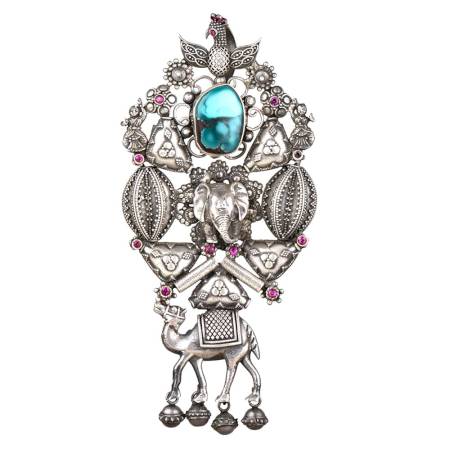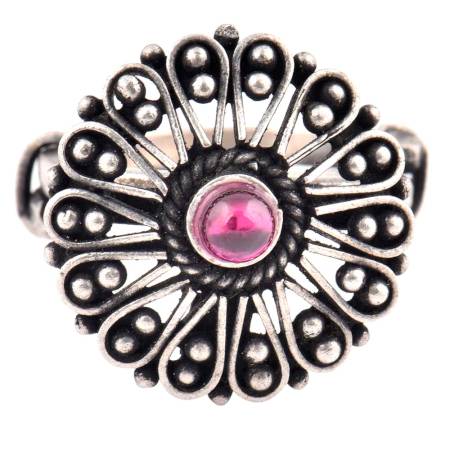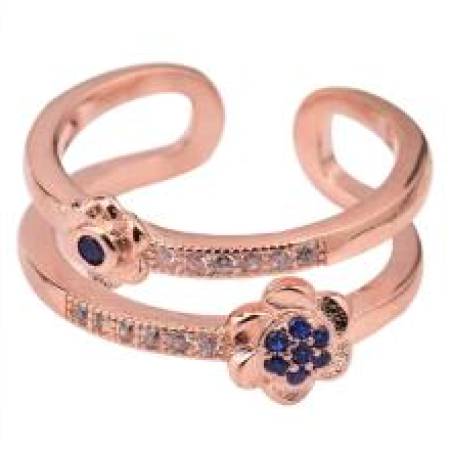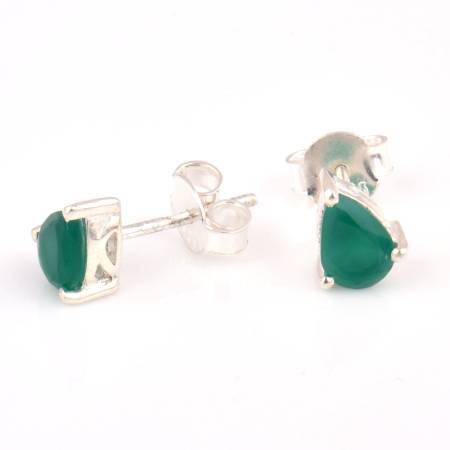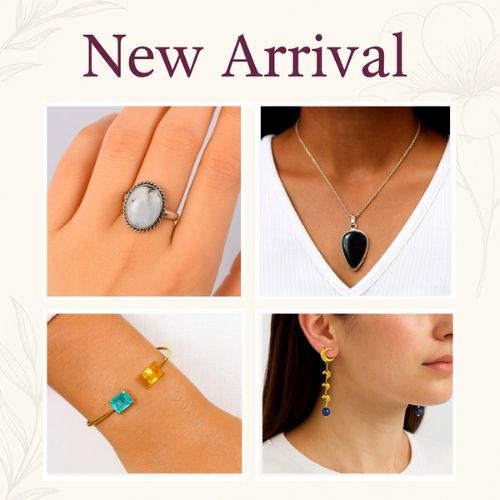Glass Oil Lamps: Heritage, Craft, and the Enduring Language of Light
A glass oil lamp is not just an object, it is a keeper of silence, warmth, and heritage. Its flame rises through a simple wick, yet it carries the dignity of centuries. Transparent walls of glass allow light to move freely, revealing every flicker and curve of flame. It is both functional and symbolic, an emblem of resilience, beauty, and continuity. In a home, it does more than brighten, it breathes atmosphere. In a temple, it does more than glow, it holds reverence. Every glass oil lamp, whether humble or ornate, is a whispering archive of human devotion to light.
What Is A Glass Oil Lamp?
A glass oil lamp is essentially a vessel that transforms oil into steady illumination, using a wick as its medium. At its core, it is utilitarian, but its true essence lies far beyond utility. The glass body allows the flame to be seen in its entirety, unhidden, unmasked, unlike metal lamps that conceal and shadow. This transparency gives the lamp its character, fragile yet enduring, simple yet profound. Traditionally, it was used in homes, rituals, and streets before electricity. Yet even today, it holds a charm that no bulb or LED can replicate. Its presence softens spaces, slows moments, and connects one with an older rhythm of life. Every flicker becomes a reminder of continuity, of ancestors who lived by its glow, of prayers that once rose beside it, and of the timeless dialogue between darkness and light.
What Emotions Or Themes Do Glass Oil Lamps Commonly Portray?
Glass oil lamps breathe emotions as much as they spread light. Their glow often carries warmth, a steady kind that comforts the soul on quiet evenings. They symbolize serenity, calm flames within transparent walls, much like thoughts held within a contemplative mind. In rituals or celebrations, they embody purity, an unbroken connection between flame and spirit. They are also vessels of nostalgia, evoking memories of evenings when families gathered around a lamp before electricity governed life. Themes of continuity surface strongly, the lamp’s steady flame becomes a metaphor for endurance, resilience, and heritage that persists through change. Spirituality too resides in their glow, reminding us of the unseen forces of faith, devotion, and inner light. More than decorative, glass oil lamps speak to the human need for grounding, a soft and enduring presence that lingers beyond its flame.
What Are The Most Recognized Styles In Glass Oil Lamps?
Glass oil lamps have carried diverse styles across time and culture. The vintage Victorian lamps, with etched patterns and delicate curves, embody elegance, often paired with brass bases. Ornamental lamps, rich with cut glass detail or colored tint, create a sense of grandeur and artistic flourish. Minimalist designs, sleek and clear, reflect modern sensibilities where simplicity becomes beauty. Between these extremes, there are hybrid forms, lamps that combine colored glass with brass engravings or frosted glass with ceramic bases. Each style is not just about aesthetics but about context, the Victorian lamp for parlors, the ornamental one for ceremonies, and the minimalist lamp for contemporary homes. What unites them is the way they amplify light, whether diffused softly through frosted glass or refracted vividly through cut designs. Each style becomes a mirror of its era, carrying the tastes, values, and sensibilities of those who cherished its glow.
Why Are Glass Oil Lamps Still Revered In Contemporary Spaces?
Even with the dominance of electricity, glass oil lamps remain relevant because they offer something lightbulbs cannot, soul. Their glow is intimate, not mechanical, creating an atmosphere that feels alive. In contemporary spaces, they function as symbols of heritage and nostalgia, reminding us of the tactile, slower rhythms of the past. They also appeal as art, crafted forms that merge glasswork with cultural motifs, making them collectible objects as much as functional ones. Many interior designers use them for ambient charm, balancing modern décor with traditional warmth. Spiritual households revere them for their purity in rituals, while minimalists admire their quiet elegance. They bridge opposites, technology and tradition, fragility and resilience, nostalgia and modernity. Their relevance lies in how they transform space, a single flame in glass can make a room contemplative, festive, or sacred. In essence, glass oil lamps endure because they carry atmosphere, memory, and meaning, not just light.
Techniques, Mediums and Craftsmanship of Glass Oil Lamps
Traditionally, glass oil lamps were made by artisans skilled in the art of glass blowing. They shaped molten glass with breath and hand, forming bases and globes that could cradle both flame and oil. Once cooled, these pieces were paired with brass or metal fixtures for durability and grace. The work was delicate, fragile glass needed balance, proportion, and patience. Each lamp reflected not just skill but philosophy, to create something that served, endured, and yet appeared fragile as breath. These lamps were never just produced, they were brought into being, each one carrying the imprint of its maker’s hands.
How Were Glass Oil Lamps Traditionally Created?
The making of a traditional glass oil lamp began with fire, molten glass heated to a glowing state. Artisans, often working in family lineages, shaped it using the ancient technique of glass blowing, guiding breath through a tube to expand and mold the form. The base and chimney were carefully proportioned for stability and flame protection. Once cooled, the glass was sometimes etched, frosted, or tinted, depending on regional styles. To ensure both function and beauty, these glass bodies were often paired with brass or bronze holders that added weight and durability. The craft was not just technical but artistic. Every curve mattered, every proportion spoke of balance. These lamps were shaped with patience, and each carried individuality, no two being identical. In essence, their creation was an act of marriage between element and hand, where fire, breath, and skill fused into a vessel of enduring beauty and purpose.
What Materials Were Commonly Used In Vintage Glass Lamps?
Vintage glass lamps carried a fusion of materials chosen for durability and beauty. Glass itself was central, ranging from clear to frosted, from lightly tinted to richly colored. Etched glass surfaces offered subtle artistry, while stained varieties reflected vibrant hues when the flame burned inside. To complement this fragility, metals such as brass, bronze, or copper formed the bases, providing both weight and stability. Some lamps incorporated ceramic or porcelain elements, painted or glazed to add ornament. Occasionally, silver or gold plating adorned decorative pieces meant for temples or aristocratic homes. Each material served a dual role, function and symbolism. Glass carried transparency and lightness, metals embodied strength, and ceramics reflected cultural artistry. The blending of these materials was never random, it was intentional, shaping the lamp’s personality. A vintage glass lamp was not merely a product of parts, it was a harmony of materials that gave soul to structure.
What Role Did Shape, Color, And Engraving Play In Lamp Making?
Shape, color, and engraving were not surface details, they defined the identity of each glass lamp. Shape influenced stability, a broad base prevented tipping, a tall chimney protected the flame from drafts, and rounded forms allowed even light diffusion. Color was emotional language, clear glass symbolized purity, frosted glass softened glow into serenity, while tinted or stained glass infused atmosphere with mood, blue for calm, red for vitality, green for harmony. Engraving added a personal and cultural layer. Floral motifs, geometric lines, or sacred symbols turned each lamp into an artifact of memory and meaning. Engravings were not merely decorative, they spoke of lineage, community, or devotion. Together, these elements elevated the lamp beyond function. The lamp was not only a flame holder but a crafted narrative, every curve, hue, and etched detail telling a story of balance, emotion, and heritage that endured each time the flame was lit.
Artistic Intent and Visual Storytelling of Glass Oil Lamps
Glass oil lamps were never just objects of utility, they were vessels of meaning. The artisan’s hand carved more than form, it carved stories, whispers of culture, fragments of faith. When lit, these lamps became narrators, speaking in flame and shadow. Each curve of glass, each tint of color, shaped emotion, moving between the sacred and the personal. They stood as metaphors of resilience, light overcoming obscurity, guidance in moments of doubt. To hold a glass lamp is to hold a mirror of history, fragile yet enduring, intimate yet universal.
What Stories Or Messages Did Glass Oil Lamps Aim To Convey?
Glass oil lamps often conveyed timeless human quests, hope, clarity, and continuity. In homes, they symbolized the triumph of light over darkness, not only in a literal sense but as metaphors of spiritual awakening. Within temples and shrines, they embodied guidance from the divine, steady flames echoing the permanence of faith. For artisans, every lamp was a cultural memory, motifs and designs encoding traditions passed down through generations. In social gatherings, their warm glow united people, weaving bonds across time. Thus, glass oil lamps carried a collective narrative, they were both private confidants and public storytellers, embodying resilience, reverence, and shared heritage.
How Did Artisans Express Political, Spiritual, Or Cultural Symbols Through Lamps?
Artisans imbued lamps with symbolic depth, often embedding coded messages within their designs. A lotus motif was not just floral, it signified rebirth and purity. Peacock engravings became emblems of beauty and continuity, reflecting regional pride. In certain periods, geometric patterns carried political resonance, symbolizing unity and structured governance. Colors of glass also bore significance, amber for divinity, green for prosperity, blue for protection. Through subtle ornamentation, artisans created layers of meaning where the object became both utility and emblem. Each lamp functioned as a cultural document, quietly carrying political, spiritual, and local identities across generations, transforming everyday light into ritualized narrative.
How Do Light, Shadow, And Colored Glass Influence Ambience?
The dance between flame and glass creates atmospheres that extend beyond illumination. Tinted glass filters the light into hues, ruby tones evoke intimacy, emerald casts serenity, golden amber radiates warmth. Shadows ripple across walls, turning static spaces into moving canvases. Clear glass emphasizes clarity and openness, while patterned glass breaks light into fragments, suggesting mystery and depth. This interplay alters moods, welcoming, contemplative, celebratory. The lamp becomes an active participant in its setting, shaping the rhythm of an evening or ritual. Through light and shadow, artisans gave spaces a pulse, turning silence into dialogue and darkness into textured memory.
Purchase, Collection & Investment of Glass Oil Lamps
Collecting glass oil lamps is as much about memory as possession. To buy one is to acquire not just décor but a fragment of cultural heritage. Authentic pieces are often found in antique stores or heritage markets, each lamp carrying whispers of prior owners. Reproductions, meanwhile, keep tradition alive in contemporary homes. For collectors, the allure lies in rarity, design, and story. A lamp’s value extends beyond currency, it resides in how it bridges the past and present. Whether cherished as heirlooms, displayed as art, or treasured as investments, these lamps endure as timeless companions of light.
Where Can You Buy Authentic Or Reproduction Glass Oil Lamps?
Authentic or reproduction glass oil lamps can be discovered across diverse landscapes. Vintage stores remain the most intimate places, where every piece has a history to tell, often accompanied by oral accounts from sellers. Heritage craft markets, especially those connected to regional artisans, offer lamps crafted with traditional methods, ensuring continuity of design. Online decor platforms like IndianShelf expand accessibility, curating both authentic antiques and modern recreations, allowing buyers to compare styles and provenance. Some collectors prefer estate sales or auctions for rare finds. Each source holds its charm, whether tactile discovery, artisan connection, or digital convenience, making the search itself part of the story.
How Can You Verify The Authenticity Of A Glass Oil Lamp?
Authenticity rests in the details. Examine craftsmanship, hand-blown glass carries subtle asymmetries that machines cannot replicate. Patina on metal fittings, often uneven and organic, suggests age. Provenance records, when available, add historical credibility. Artisan signatures, maker’s marks, or regional motifs often hint at origin. Reproduction pieces, while beautiful, tend to have uniform precision and newer sheen. Texture, weight, and even the way light refracts through old glass can indicate genuineness. Experts often suggest comparing with documented collections or consulting curators. Verifying authenticity requires both observation and patience, turning the process into an intimate act of learning, where the lamp reveals its truth slowly.
What Makes A Glass Oil Lamp A Worthwhile Investment?
A glass oil lamp becomes a worthwhile investment when it balances rarity, craftsmanship, and cultural value. Handcrafted pieces, especially those tied to specific regions or periods, often gain significance over time as they become harder to find. Antique lamps, with unique patinas and storytelling motifs, carry collectible charm, appreciated by museums and private collectors alike. Beyond monetary value, these lamps enrich homes with character and heritage, offering a beauty that endures. In modern contexts, they also double as décor pieces, seamlessly merging function with artistry. Thus, an investment in a glass lamp is not only financial but emotional, owning history that glows.
Care, Cleaning & Preservation of Glass Oil Lamps
The fragility of glass lamps demands tenderness. Preserving them is not just about longevity, it is about respect for memory etched into their form. Storage requires upright positioning, careful handling, and protection from dust and humidity. Cleaning should be deliberate, balancing efficiency with gentleness. Complementary materials like brass polish or linen cloths maintain shine without abrasion. Restoration, when required, must preserve originality, never stripping away history in pursuit of newness. Each act of care becomes a ritual, ensuring that the lamp continues to narrate stories for future generations while retaining its soul intact.
How Do You Properly Store And Maintain A Glass Oil Lamp?
Proper storage and maintenance hinge on consistency and delicacy. Always store lamps upright to protect glass integrity and prevent oil leakage. Cleaning requires soft, lint-free cloths, avoiding harsh abrasives that risk scratching or dulling the glass. Metal fittings should be polished periodically to prevent corrosion, and wicks must be replaced when worn to preserve function. Keep lamps away from extreme humidity or heat, as temperature fluctuations may crack the glass. Covering unused lamps reduces dust accumulation. Maintenance is not only practical but ceremonial, transforming routine cleaning into a gentle dialogue with the object, ensuring continuity of its quiet brilliance.
What Materials Best Complement Glass Lamps In Maintenance?
Maintenance materials must be chosen for their gentleness. Mild soap with warm water suits glass surfaces, cleansing without eroding. Soft linen or microfiber cloths prevent scratches during polishing. Brass polish works best for metal fittings, restoring luster while protecting against corrosion. For wick care, cotton replacements preserve authenticity. Avoid synthetic chemicals or abrasive tools, as they strip texture and charm. These simple tools, soap, cloth, polish, become allies in preservation, ensuring that the lamp remains functional while retaining its natural elegance. In the end, maintenance materials are not accessories but guardians, extending the lamp’s life with quiet efficiency and respect.
Can Old Glass Oil Lamps Be Restored Without Losing Their Charm?
Restoration can indeed protect charm if approached with sensitivity. Gentle polishing removes soot stains without erasing patina. Worn wicks can be replaced while respecting traditional design. Small chips may be repaired with specialized glass techniques, restoring structure while preserving originality. What must be avoided is over-restoration, where excessive polishing strips historical texture. The aim is balance, renew usability without diminishing age’s beauty. True restoration lies in conservation, stabilizing, not altering. When done thoughtfully, restoration allows lamps to glow again, not as replicas of their past selves but as resilient continuations, carrying both their scars and their shine forward.
What Are Common Damages Glass Oil Lamps Suffer Over Time?
Glass oil lamps, by nature fragile, are vulnerable to distinct damages. Chips and cracks emerge from mishandling or sudden shifts in temperature. Soot stains gradually darken the glass, obscuring clarity. Prolonged exposure to moisture corrodes metal fittings, weakening structure. Wicks, if neglected, stiffen or decay. At times, colored glass fades under harsh sunlight, reducing vibrancy. These damages, though common, need not spell loss, they remind us of the lamp’s lived journey. With care and restoration, most flaws can be managed. In fact, imperfections often add character, making each lamp unique, marked by the passage of time rather than erased by it.
Home Decor, Styling & Mood Setting With Glass Oil Lamps
Glass oil lamps breathe into a room with a glow that is neither hurried nor artificial. Their flame is alive, soft, and unreplicable, filling corners with whispers of calm and warmth. They do not only light a space, they sculpt it. A study feels thoughtful, a living room becomes welcoming, a hallway acquires presence. The glass body, whether frosted or transparent, holds not just oil and wick but an aura of intimacy. Each lamp is less about decoration and more about atmosphere, a living piece that converses silently with shadows.
How Can Glass Oil Lamps Influence A Room’s Ambience Or Tone?
Glass oil lamps are not mere functional lights, they are mood-setters. Their glow is closer to firelight, soft, flickering, never fixed. In a living room, they slow conversations, making them warmer, gentler. In a bedroom, they quieten the restless air, pulling in serenity and intimacy. In prayer corners, their flame feels sacred, evoking stillness and reflection. Unlike electric bulbs that flatten a room, glass lamps layer it, light dances across walls, leaving a trail of shadows that change every second. The transparency of glass adds to this play, allowing the viewer to see flame and oil together, reinforcing a sense of life contained in glass. A colored glass lamp can make a room romantic, while a clear one gives clarity and calm. In essence, they soften edges, smoothen moods, and bring people closer to themselves and to each other.
What Interior Styles Pair Well With Glass Oil Lamps?
Glass oil lamps travel seamlessly across decor styles because their presence is timeless. In rustic settings, they merge with wood, earthy textures, and raw walls, offering warmth that feels like an embrace. In vintage interiors, they evoke nostalgia, echoing times when light was slower, more deliberate. A bohemian home thrives on layers of fabric, color, and mood, here, colored glass lamps add the final touch of eccentric charm. Within traditional Indian décor, they are inseparable, often accompanying brass figurines, carved doors, or temple corners, embodying ritual as well as design. Even in minimalist spaces, a frosted glass lamp can be the one accent that balances simplicity with soul. Their versatility is rooted in their emotional tone, they do not clash but complement, carrying an old-world intimacy into contemporary frames. They are not bound to one style but flow like light itself, shaping, blending, and softening.
How Do You Choose The Right Glass Oil Lamp For A Living Room, Hallway, Or Study?
Choosing a glass oil lamp is less about size and more about intention. A living room is a stage for gathering, laughter, and conversation, ornate etched lamps work here, offering both spectacle and intimacy. They become talking points while quietly softening the room’s tone. A hallway, however, is transitional, people pass through, and light should guide, not dominate. Slim frosted lamps create a gentle, elongated glow that feels like a companion along the way. A study, on the other hand, demands concentration. Here, compact clear-glass lamps are ideal. They brighten without distracting, keeping focus while lending calm. Transparency symbolizes clarity, aligning with the purpose of reading or working. Beyond placement, one must also consider oil type, glass tint, and flame stability. Each choice, etched, frosted, or plain, is not only aesthetic but atmospheric, ensuring the lamp does not simply sit in a corner but participates in the life of the room.
Cultural Impact & Historical Legacy of Glass Oil Lamps
Glass oil lamps have always lived between function and ritual. They lit temples, streets, and homes, yet carried symbolism far beyond utility. Romans used them for festivals, Indians for prayer, Europeans for grandeur, and Islamic artisans for poetry in stained glass. They marked time, measured evenings, and celebrated seasons. To light a lamp was never only about sight, it was about invoking presence, divinity, and memory. They shaped the way people interacted with nights, binding flame with culture. Even today, their glow is not modern convenience but ancient continuity, a link to civilizations that spoke in firelight.
What Is The Historical Significance Of Glass Oil Lamps Across Civilizations?
Across civilizations, glass oil lamps were more than sources of light, they were cultural markers. In ancient Rome, they illuminated feasts, public gatherings, and rituals, representing continuity in community life. In India, they became deepams, symbolic of light conquering darkness, often associated with festivals and spiritual rituals. Islamic cultures advanced them into stained glass lamps, where light and color together created prayerful atmospheres in mosques. In medieval Europe, glass oil lamps signified wealth and refinement, as the crystal glow separated nobility from commoners. Their symbolism transcended geography, every culture viewed flame in glass as something sacred, binding, and intimate. The act of protecting flame within fragile glass was almost metaphoric, human civilizations safeguarding their own spirit and stories in a delicate vessel, allowing light to survive through centuries.
How Did Different Cultures Contribute To The World Of Glass Lamps?
Each culture left an imprint on the evolution of glass oil lamps, adding techniques and meaning. Islamic artisans perfected the art of stained glass, embedding calligraphy and geometry into lamps that turned light into divine reflection. Venetians introduced clarity and elegance, their glassblowing mastery producing lamps of unmatched delicacy. Europeans during the 18th and 19th centuries popularized crystal oil lamps, making them symbols of aristocracy and evening gatherings. In India, artisans crafted ritual lamps with colored glass inserts, merging functionality with devotion. Middle Eastern cultures leaned towards lantern-like structures, enclosing glass in metal frames for both safety and portability. Together, these contributions created a global language of glass lamps, one that spoke of both artistry and necessity. The shared thread is clear, wherever glass met flame, cultures discovered a way to transform ordinary nights into experiences of beauty, reverence, and community. Each lamp is thus a fragment of collective heritage.
Which Artisans Shaped The Evolution Of Glass Oil Lamps?
The story of glass oil lamps is inseparable from the hands that shaped them. Indian glassblowers infused lamps with spirituality, ensuring each piece was not only functional but ritualistic, fit for temples and festivals. Venetian craftsmen brought refinement, their Murano glass lamps celebrated for clarity, color, and precision. Middle Eastern lamp-makers added layers of ornamentation, filigree, metal casings, and stained motifs, turning lamps into portable artworks. These artisans were not only creating objects, they were sustaining traditions. Each lamp carried the imprint of skill, patience, and belief. Their work ensured that a simple flame could reflect identity, whether it was faith in India, artistry in Venice, or architectural harmony in Islamic lands. Even today, collectors and households treasure these pieces not just as décor but as echoes of craftsmen who shaped fire into heritage. Their legacy is alive in every flicker that glass still protects.
Glass Oil Lamps vs Other Lighting Forms
Modern light is efficient, bright, and consistent, yet it lacks soul. Glass oil lamps remind us of intimacy, the way flame moves, the way shadows breathe. Compared to LEDs or bulbs, they are slower, warmer, alive. Compared to brass or clay lamps, they are lighter, more fragile, and luminous with a transparency others cannot replicate. A brass lamp feels permanent, a clay lamp earthy, but glass feels immediate, fragile yet glowing. Colored glass adds mood, layering tone, while clear glass insists on honesty. They are not just lamps, they are experiences of light, distinct from every other form.
How Are Glass Oil Lamps Different From Modern LED Or Electric Lights?
LEDs and electric lights offer convenience, switch on, instant brightness, no smoke, no care. Yet, they are mechanical. They flood a room but never breathe with it. Glass oil lamps, on the other hand, invite presence. Their flame is alive, flickering with air, reacting to movement. This unpredictability creates intimacy that a sterile LED glow cannot. More than function, they carry ritual and symbolism, lighting one is an act, almost sacred, unlike pressing a button. They remind us of rhythm, of nights when time was measured by flame’s endurance. Their glass body makes the flame visible from all angles, emphasizing fragility and beauty. Unlike LEDs, which dominate, glass lamps soften. They do not only illuminate, they shape atmosphere, making space for pause, reflection, or romance. The difference lies not in brightness but in essence, one is engineered efficiency, the other is living memory.
What Sets Glass Oil Lamps Apart From Brass Or Clay Lamps?
Brass and clay lamps share the same ancestry of ritual, but their nature differs from glass. Brass lamps are strong, heavy, and enduring, symbols of permanence and prosperity. Clay lamps are humble, earthy, and accessible, tied deeply to festivals and community life. Glass lamps, however, embody fragility and luminous delicacy. Where brass dominates a room with presence and clay disappears after use, glass lingers in memory because of its transparency. The sight of oil floating, flame flickering, and glass glowing creates an intimacy that metal or clay cannot fully replicate. Glass speaks of vulnerability, of beauty held carefully. It connects to emotions of fragility and care, reminding us that what glows brightest is often what can break. In this contrast lies their charm, brass and clay carry weight and earth, while glass carries light itself.
How Do Colored Glass Lamps Differ From Clear Glass Designs?
Colored and clear glass lamps serve different moods. A colored lamp filters flame through tinted walls, transforming ordinary light into mood-driven glow. Red glass makes rooms romantic and warm, green evokes calm and freshness, while blue creates depth and dreaminess. They are perfect for evenings when light must carry emotion. Clear glass, however, is about clarity and honesty. The flame is bare, visible, unfiltered, its purity unaltered by color. In studies, prayer rooms, or minimal spaces, clear glass fits perfectly, offering calm focus. Colored glass is expressive, clear glass is meditative. The choice is about atmosphere, whether one seeks drama or simplicity, mood or truth. Both remind us that light is not uniform, it is shaped by glass, by intention, by setting. Where color turns flame into art, clear glass allows it to remain essence.
Emotional & Symbolic Value of Glass Oil Lamps
Glass oil lamps are more than vessels of light; they are vessels of meaning. Every flicker carries memory, every glow whispers of rituals, prayers, and gatherings around its quiet flame. They embody permanence in a transient world, reminders that illumination is not only physical but also emotional. A glass lamp is fragile yet enduring, reflecting both the delicacy of human bonds and their resilience across generations. Its shine is not just brightness but also blessing, conveying warmth, reverence, and continuity. In homes, temples, and intimate corners, glass oil lamps anchor us to our roots, keeping the presence of light alive.
Can Glass Oil Lamps Serve As Meaningful Gifts For Special Occasions?
Yes, glass oil lamps, when given as gifts, transcend material exchange. They become symbolic carriers of hope, blessing, and shared light. Unlike fleeting tokens, a lamp speaks to continuity; it promises that the giver wishes the recipient not just happiness but radiance that endures. A lamp ignited in one household connects spiritually to another, as if flames travel unseen across hearts. In weddings, housewarmings, or festivals, such a gift is layered with prayer and intention. It is not just décor, it is a quiet vow of prosperity, resilience, and togetherness. Thus, glass oil lamps make gifts that stay luminous long after ceremonies fade.
What Emotional Value Do Inherited Glass Oil Lamps Hold?
Inherited glass oil lamps are not objects, they are living heirlooms, carrying shadows of ancestors and the aura of homes long gone. Their glow is infused with stories: the evenings when a grandmother prayed beside them, the festivals where families gathered, the silent nights where their flame kept watch. Such lamps act as bridges, linking one generation to another, ensuring rituals do not dissolve into time. The emotional value lies in their layered memory: fragile glass, yet indestructible presence. To inherit a lamp is to inherit light itself, a light that does not merely illuminate spaces, but preserves belonging, continuity, and kinship.
Why Do People Feel A Deep Connection To Lamps From Past Eras?
People feel drawn to lamps from past eras because they are more than antiques, they are timekeepers of faith, resilience, and endurance. A lamp lit centuries ago carries the same elemental purpose as today: to defeat darkness, to mark prayer, to gather people in reverence. Their fragility mirrors the human condition, while their continued survival represents resilience. The connection is not just visual but spiritual, an affirmation that generations before us trusted in the same light. To hold an old lamp is to hold a fragment of continuity, a reassurance that even as worlds change, the essence of light remains eternal.
Frequently Asked Questions (FAQs)
What Defines A Lamp As Vintage Or Antique?
A lamp is defined as vintage or antique by the convergence of age, craftsmanship, and uniqueness. A vintage lamp often reflects design sensibilities of a particular era, its cuts, colors, and details speak of cultural aesthetics. An antique, usually older, embodies both rarity and survival, pieces often preserved through families or collectors. Both categories transcend mere function. Their value lies in being more than tools of light, they are storytellers of their time. Patina, subtle wear, and intricate details all contribute to their authenticity, distinguishing them from mass-produced or purely decorative imitations.
Can Glass Oil Lamps Be Recreated Authentically Today?
Yes, authentic recreations are possible through skilled artisans who preserve traditional methods of glassblowing, etching, and lamp-making. These craftsmen use techniques passed down generations, ensuring that each piece carries the spirit of its origins. While modernity has altered materials and designs, artisans committed to heritage keep the practice alive. Authenticity lies in more than resemblance, it lies in process and intention. A lamp blown with patience, shaped with precision, and finished by hand echoes the quiet dignity of the originals. Thus, authentic recreations are not replicas, they are living continuations of an ancient craft.
How Do You Protect Glass Lamps From Soot And Breakage?
Protecting glass oil lamps requires care and ritual. First, use clean, high-quality oil to minimize soot; impurities cloud the glass and reduce clarity. Wicks should be trimmed properly to ensure steady flames rather than smoky ones. Placement also matters, lamps kept away from drafts burn evenly and safely. To prevent breakage, lamps should rest on stable surfaces, ideally with cushioning bases to absorb accidental impact. Gentle cleaning with soft cloths preserves transparency while avoiding scratches. When maintained with such devotion, lamps not only endure longer but also retain their symbolic purity, shining as they were meant to, for warmth and prayer.
Are Glass Oil Lamps Still Relevant In Modern Homes?
Absolutely, glass oil lamps transcend temporal boundaries. In modern homes, they serve as accents of timelessness amidst changing décor trends. Their presence infuses spaces with both aesthetic charm and symbolic weight. During festivals and rituals, their role is irreplaceable, a quiet glow that soft lighting cannot replicate. Beyond tradition, they offer mindfulness in everyday life, transforming ordinary evenings into reflective moments. Many incorporate them into interiors as heritage pieces, blending seamlessly with minimalism or luxury décor. Thus, their relevance endures, not as relics of the past, but as reminders that light, in its truest form, remains a universal need.
Can Traditional Lamp Styles Inspire Contemporary Lighting Design?
Yes, traditional glass oil lamps often serve as blueprints for modern designers who reinterpret heritage into contemporary formats. Their silhouettes, colors, and symbolic motifs inspire electric lamps, pendant lights, and decorative fixtures. The translation is not literal but thematic, designers borrow the essence of continuity, spirituality, and elegance. What results are hybrid creations, modern in utility, timeless in aesthetic. A glass lamp’s gentle curve may inspire a chandelier, its lotus or peacock motif may find new expression in steel or crystal. In this way, old forms breathe into new light, ensuring tradition and innovation coexist seamlessly.
